Consolidated PB4Y Liberator, 38799, Survivors landed in
Galway
In the early morning hours of 16th September 1944, five young
men washed up on the shore of Aillebrack, a rocky edged townland
on the far western edge of County Galway. They
arrived there in a battered inflatable dingy having survived the
ditching of a United States Navy patrol bomber two days previous
in the Atlantic. With them they brought the body of one of
their comrades who had succumbed to exposure and injuries.
Two of the men, with their last remaining energy proceeded to
clamber over rocks and beach to find assistance, finally
arriving at the door of local man Michael Conneely, who took
them in and raised the alarm with his neighbor, Martin
O'Malley. Martin was a member of the Irish Army Coast
Watching Service (CWS) and he made his way first to the CWS Loop
Out Post on the nearby hill top at Dunhill, where the volunteers
were able to put a call through to the Gardai in Clifden and
Army in Galway. He then returned to the Connelly house and
searched the shoreline until he found the remaining
survivors. Within a short time, all five men were wrapped
up around Michael Conneely's fire and the Irish Army and police
were on their way.
The Irish Report on the men's arrival contains a wealth of data
about what the survivors told the Irish authorities.
The men were taken to Clifden Cottage Hospital later that
day. There they were visited by Commandant Power of the
Irish Army. They stayed at the hospital until the 21st of
September when they were driven by the Irish Army to the border
with Northern Ireland. After a brief stay in Northern
Ireland, they were flown home from Lough Neagh on October 1st.
The war diary of Fleet Air Wing 7 (FAW7), based at Dunkeswell in England, on September 5th 1944 record that ‘Lieutenant TRUDEAU in PB4Y-1, bureau number 38799, departed Norfolk for Dunkeswell this date.” It was one of a number of PB4Y aircraft being ferried across the Atlantic at this time from Norfolk, Virginia. The FAW7 war diary was not typed on the day itself but some time near the wars end.
They are next mentioned on the 14th of September as: “PB4Y-1, bureau number 38799, Lieutenant TRUDEAU Pilot, while on ferry flight from Norfolk to Dunkeswell was forced by exhaustion of fuel to land in the sea six (6) miles off the coast of Ireland (R) after having taken off for Iceland (C) from Goose Bay.”
The following days entry recorded:
Five (5) survivors of PB4Y-1, bureau number 38799, landed at Galway Ireland in a dinghy all suffering from exposure. In addition, BECKWITH, Nathan S1c, USNR 204 57 84 died in the dinghy and his body was brought ashore. The following four (4) members of the crew are missing: —
Ensign Carl Grey SNAVELY Jr., 320784, USNR.
Ensign Phillip Arthur MILLS, 326268, USNR.
PETERSON, Vernon H., AMM3c, 612 91 05, USNR.
FLEUCHER, Joseph G., ARM2c, 600 88 65, USNR.
The US Navy Bereau of Aeronautics Aircraft Trouble Analysis form
for this aircraft records the following narrative:
Forced landing at sea, out of fuel
Plane was in the A quadrant of the Belleek station and lightly less than 15 miles from the Donegal coast when the plane ran out of fuel. After making a successful landing in extremely stormy weather, all members of the crew got out of the ship but they were able to launch only one of the two life rafts. According to the pilot, it took him over thirty mins. to reach the raft after it had been put in the water. From his description of the seas the four members of the crew who are missing would have been dead by the time the survivors reached the coast in spite of their Mae Wests. The survivors, with Beckwith’s body, reached the Galway coast in a rubber boat on the morning of September 16th.
The following is hand written in the card:
Opinion of Ad. Repb (?) acc due to negligence & poor judgement of pilot.
No ???? Stars taken, No radio ???? taken, no position requested, no ???? lights taken or even lines plotted, only DR used. *nest sentence difficult to read. Could have avoided front by climbing to 12,000 feet.
Lt Treudeau given letter of reprimand by ComAirLant.
Fitting on oxygen equipment was missing. Pilot failed to notify his briefing officer at Goose Bay, as directed.
This photo of the crew appeared in Thomas L Walshs book and on
various newspaper articles.
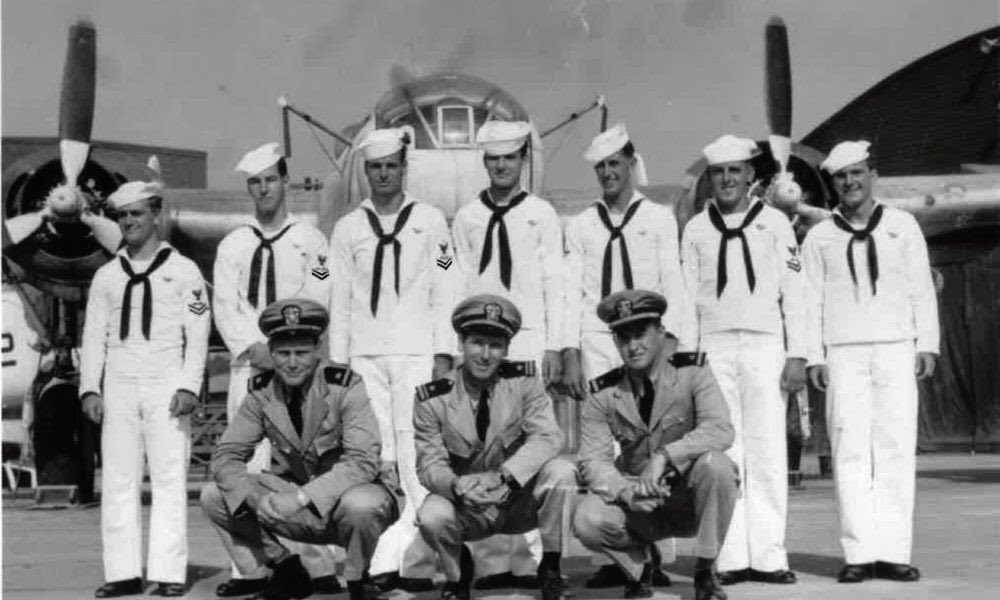
At the back, from left to right were Gerald Flecker, Gunner; Joseph Fleucher, 1st Radioman*; Wilber Lyle, Plane Captain; J Edward Vigeant, Gunner; Henry Beckwith, Gunner**; Vernon Peterson, 2nd Mechanic*, and Frank Cicero, Gunner
and at the front are Ens Carol Snavely Jr, Co-Pilot*; Lieut James Trudeau, Commander and Pilot; Ens Philip Mills, Reserve Pilot and Navigator*
The asterix' indicate those Lost at sea* or died in emergency dinghy**.
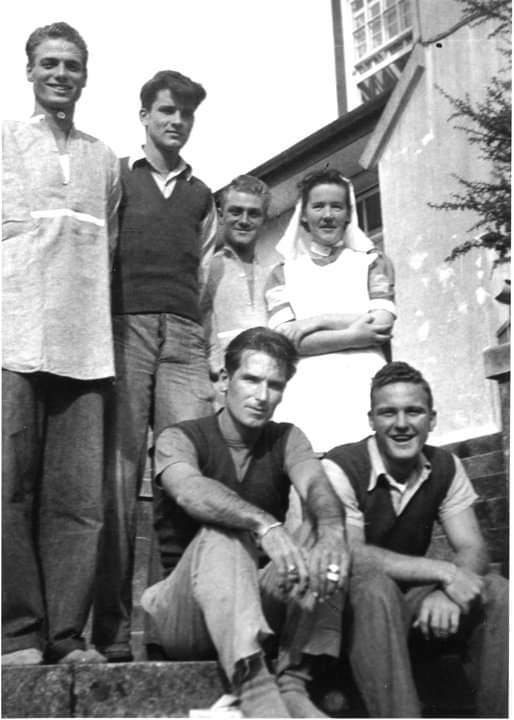
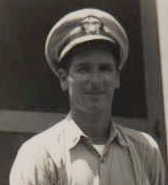 Lt
James O TRUDEAU
Lt
James O TRUDEAU
Born in 1916 in Fairchild, Connecticut to Anastasia and Florimond ‘Fred’ Trudeau, James was very active in the 1990’s in making efforts to remember his former crew mates. He traveled to Ireland in 1994 and attended the unveiling of the memorial at Ballyconneely and the writing of the book, Damnyankee by Thomas Walsh.
The Ohio University alumni journal in January 1942 and November 1943 reported on James’s service, with a photo of him in the 1942 issue. The first report reads:
A near-tragedy involving Naval Air Corps Cadet James O. Trudeau, ‘41 (see picture), and another flier occurred at the naval air base, Corpus Christi, Tex., in mid-January. Cadet Trudeau, flying against the sun, crashed head-on into another plane and as a result suffered critical injuries, the worst of which was a fractured skull. His condition is now improved, according to the latest report received by his brother, Clyde A. Trudeau, a freshman at Ohio University. At the naval training schools at Grosse lle, Mich., and Pensacola, Fla., Trudeau was given one of the highest ratings of all those in his group. He was expecting to he transferred soon to the West Coast for combat duty.
James Ovila Trudeau registered for the draft in Bridgeport in October 1940, while he was studying in the University of Ohio.
He married his wife Rita Limke in April 1943 while stationed as a patrol bomber instructor, according to the journal report, based at Bronson Field, Pennsacola, Florida.
His wartime address was 110 Hickory, Bridgeport,
Connecticut. His name featured in a number of wartime
articles in relation to his ditching. The September 1945 issue
of Flying Magazine carried an advertisement from the magazine
for service personnel who had survived ditching to write in to
claim membership of the Goldfish club.
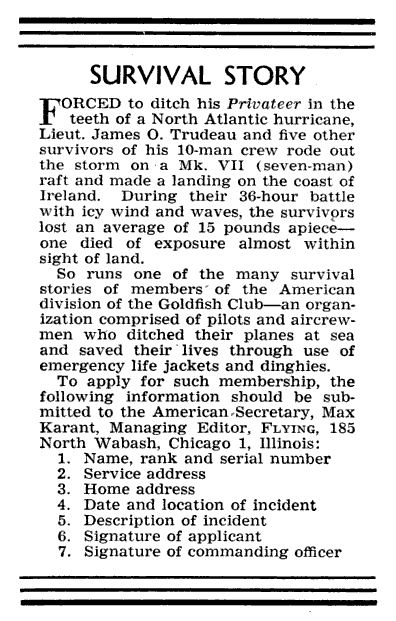
He retired in 1953 from the Navy as a Lieutenant but remained on the Navy Reserve lists until the 1980’s. James passed away in Florida in 2015 or 2016.
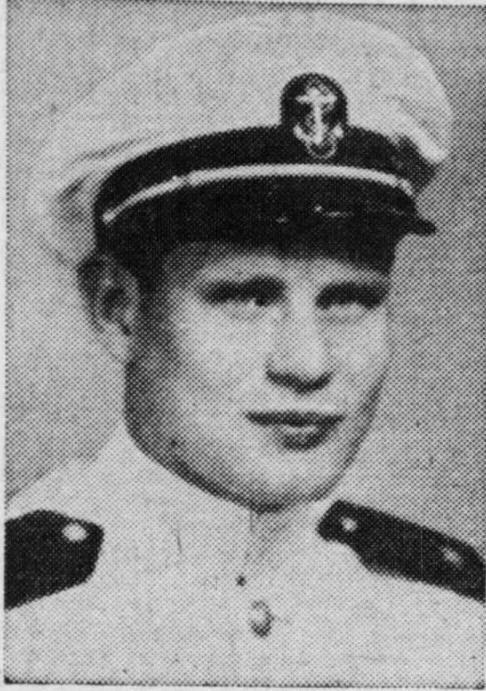 Ens.
Carl Grey SNAVELY Jr. O-320784 +
Ens.
Carl Grey SNAVELY Jr. O-320784 +
Carl registered for the draft in while he was studying at
Cornell University. He was born on the 6th of October 1919
and was the adopted son of the famous American Football coach,
Carl G Snavely and his wife Bernice.
Having a famous father, Carl Jr featured in a number of wartime
articles in the Ithaca Journal, where his father was coach of
the Cornell University Big Red football team.
In January 1941, they reported on a quandary faced where by he
wanted to learn to fly at the nearby airport but also wanted to
play college football. He was faced with having to loose
weight to allow him to begin flight training or put on weight to
be suitable for football playing. March 1942 would find
them publish his acceptance into the US Navy Naval Reserve and
his likely beginning training. He was at that time
studying hotel administration in Cornell University.
Just over a year later, his completion of three months of
pre-flight training at the University of North Carolina was
recorded along with the photo attached, one of the only times
his photo appeared in the newspaper. He had completed some
training already at Ithaca airport and was now due onto Naval
Air Station Bunker Hill at Peru in Indiana for primary flight
training. This was complete by August of 1943 and he
passed on to Pensacola, Florida for intermediate
instruction.
The 21st of September 1944 would find the Ithaca Journal and
newspapers country wide reporting on the loss of Ensign
Snavely. The Ithaca Journal reported: "Since receiving his wings at Pensacola Oct.
22, 1943, he had been on patrols from stations at Norfolk,
Boca Chica, and elsewhere. The day after his
graduation he married Miss Lillian Lucy of Geneva."
Carl's parents adopted a second son in 1945 and he was
also named Carl Grey Snavely III.
His name is inscribed on the war memorial in DeWitt Park,
Ithica.
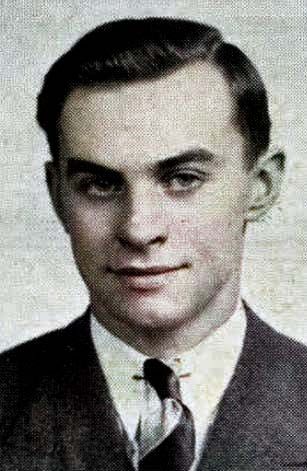 Ens. Phillip Arthur MILLS
O-326268 +
Ens. Phillip Arthur MILLS
O-326268 +
The US Navy Casualty books for WW2 record Phillip as being the
wife of Virginia Cailey Ann Mills of 5135 Kenwood, Chicago,
Illinois. His mother Dorothy Prodoehl and father Arthur
Mills lived in Illinois.
Phillip was born on 11 April 1922 in Chicago. He was
working with the Swift and Company at the time he registered for
the draft in the summer of 1942. He was residing with his
mother and step father at 3816 Ellis Avenue at the time of the
1940 census.
The Oakland Kenwood Outlook tracked his Naval career throughout
1943 to 1945. In January 1943 they published that he had just
left for the University of Iowa, for pre flight training and
also that he had obtained a private pilots license in
1942. Around the early part of 1943, he asked his fiance
Virginia Bogus to marry him, and they became engaged. He
was then posted to Hutchinson, Kansas for primary flight
training. They reported in December 1943 that he had been
awarded his commishion as an ensign in the US Navy Aviation
branch on 27 November 1943 at NAS Corpus Christi, Texas.
From there he had moved to Jacksonville, Florida. And it
was here in January 1944, the he and Virginia were married.
Oakland Ensign Missing at Sea Ensign
Phillip A. Mills of 3816 Ellis Ave. son of Mrs. Dorothy
Prodoehl husband of Virginia Ann Mills of 6749 S. Peoria St.
is missing following a plane crash at sea since
September 14. The plane was blown several hundred miles of
their course in a hurricane and ran out of fuel. There are
five survivors, one dead and four still listed as missing.
Ensign Mills graduated from Oakenwald School, Tilden
Technical High School and won his letters in track and
football. He attended Wilson Junior College and won his
letters in football and baseball. He received
his gold wings as a Navy flyer November 27, 1943, at Corpus
Christie, Texas. He was a member of the first Panther Team
in Oakland. He was on his way overseas when the plane crash
occurred.
The newspaper on November 8th, 1945 further reported that he had been declared dead, reapting much of the older article. With the following additional information added , abiet with a slight error on the location of Donegal Bay.
Ensign Phillip A. Mills, son of Mrs.
Dorothy Prodoehl, formerly of 3816 Ellis, now residing at
6?? Parnell ave. has been officially declared dead by
Secretary of Navy James ForestaL His wife, Virginia Ann
Mills is a stewardess for Northwest Air Lines in Seattle,
Washington. The plane crash occured at sea 5 hours out from
Meeks Field, Iceland, on the 14th of September, 1944. The
plane crashed just of Donegal Bay, Iceland. There were 5
survivors and one died in the life raft. Ensign Mills tried
vainly to save the life of Ensign Carl Snaveley and both
were lost at sea besides 2 others of the crew.
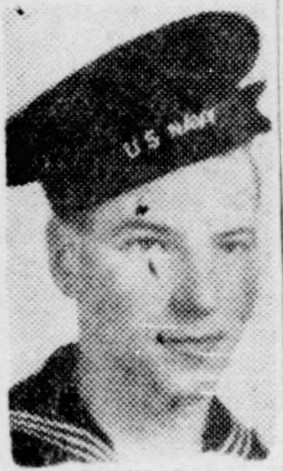 ARM2c
Joseph Gerard FLEUCHER 6008586 +
ARM2c
Joseph Gerard FLEUCHER 6008586 +
Son of Joseph H Fleucher and Victoria Stark brother of Robert
Anthony Fleucher of Rochester.
The Democrat and Chronicle from Rochester, New York, on the 24
July 1944 reported that he had just been promoted from a 3rd
Class petty officer to a 2nd Class rank. At that time,
they said he had just returned from seven month of sea
duty.
On the 22nd September reported on Joseph's having been reported
missing. He was recorded as being a radio gunner on B-24
patrol aircraft and that his co-pilot was Carl G Snavley.
That notice recorded his training had been completed in Florida
and that he had been sent then on five months of duties to South
America.
He attended Aquinas Institute for one year and Edison Technical
high School for a further year.
The newspapers a year after the crash reported again on Joseph
that his father had been informed that he was officially
reported dead and the article went to describe the circumstances
of the landing in Ireland
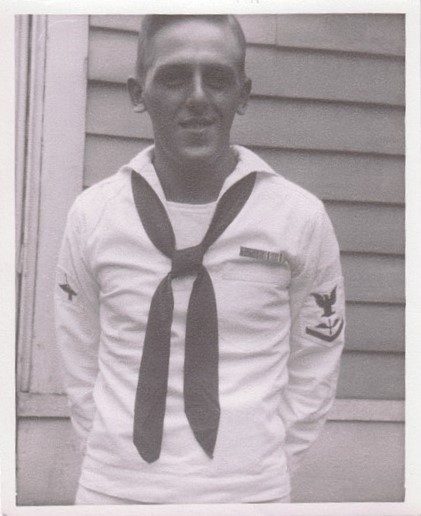 AMM3c
Vernon Howard PETERSEN 06129105 +
AMM3c
Vernon Howard PETERSEN 06129105 +
Son of Mrs. Ruth O. Petersen who resided in 4907 Calvert Ave, Cincinnati, Ohio. His father Wilhelm had passed away in 1939. Both his parents were born in Denmark. Vernon was born on the last day of 1921 in Chicago and at the time he registered for the draft, was working for the Cincinnati Milling Machine Co in that city.
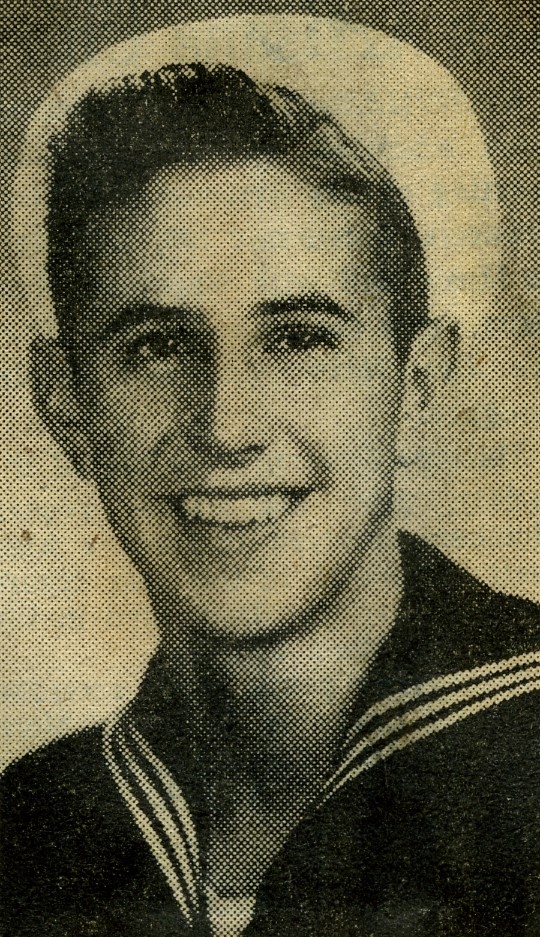 S1c
Henry Elnathan BECKWITH +
S1c
Henry Elnathan BECKWITH +
Son of Mr. & Mrs. Charles and Gertrude Beckwith who resided in Pascoag, Rhode Island and was born in April 1925 in Massachusetts. He is resident with his parents and younger brothers, Gordon and Robert in Sanitorium Road, Burrillville. He survived the ditching and made it to a life raft only to succumb to the elements as the battered crew members made it to shore.
His remains were returned to the United States in 1948 for
burial and were interred in Long Island National Cemetery, East
Farmingdale. He had been buried in Lisnabreeny outside
Belfast.
The Beckwith-Bruckshaw Memorial Lodge in Burrillville, near
Pascoag, appears to have been named in his honour, as well as
that of Robert E Bruckshaw nother local WW2 US Navy casualty.
His local newspaper carried the following article in March
1945. This was kindly provided Betty in the Burrillville Historical &
Preservation Society.
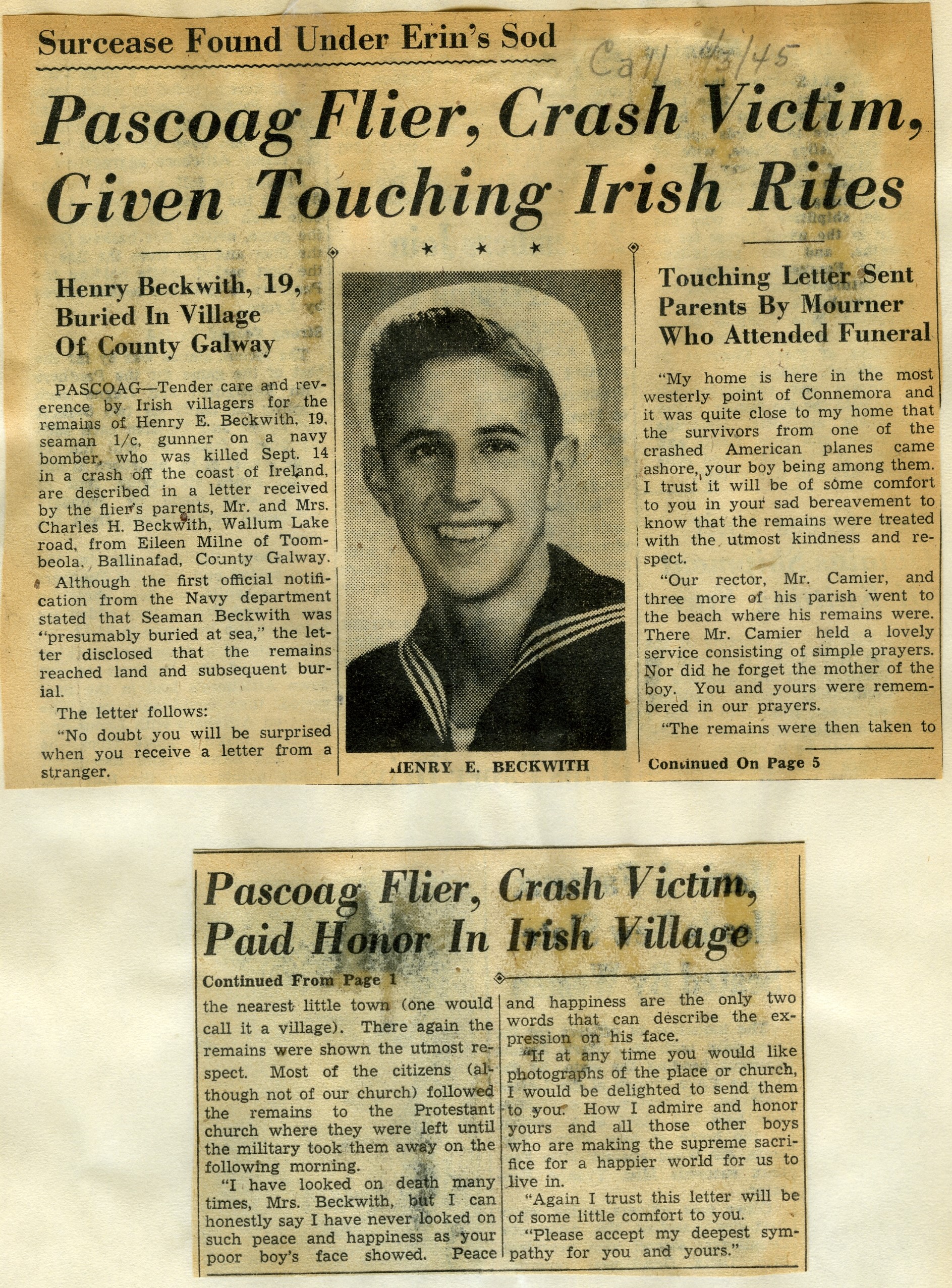
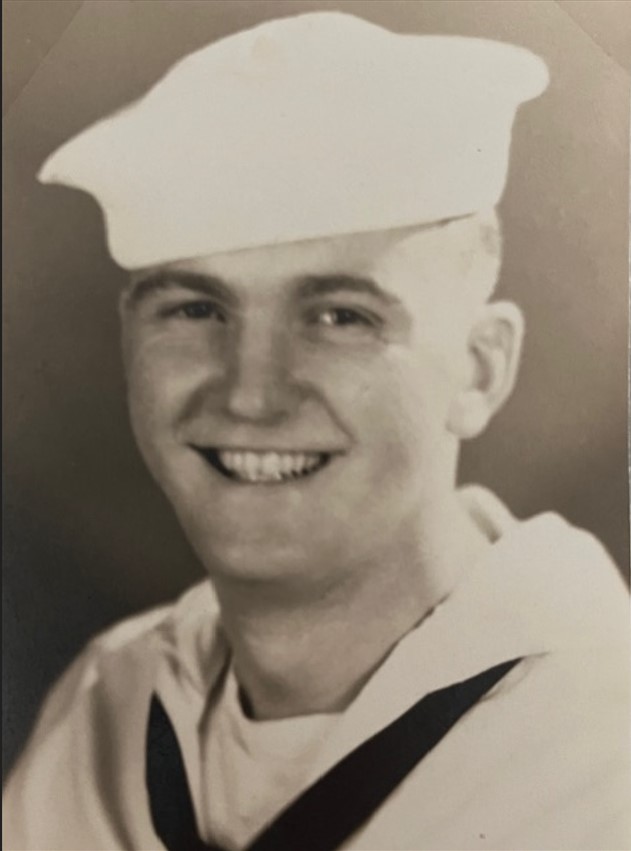 S1c Frank
P CICERO 8001617
S1c Frank
P CICERO 8001617
The son of Vincent and Angeline Cicero, born in October 1923 in Perry, New York. He lived at 407 First St. Solvay NY with his mother during the war years, his father having passed away in June 1942. Frank was drafted into the Navy in March 1943.
He didn’t tell much of his wartime experiences but his daughter was able to pass on some information. He married his wife, Bertha on October 28, 1944 upon returning from the Irish interlude. She remembers seeing a letter he sent his fiancé from Ireland telling her he was O.K. and if anyone told her he had been killed in a plane crash, not to believe them.
Frank and his family lived in Chicago post war and it was there
that he passed away in February 1986.
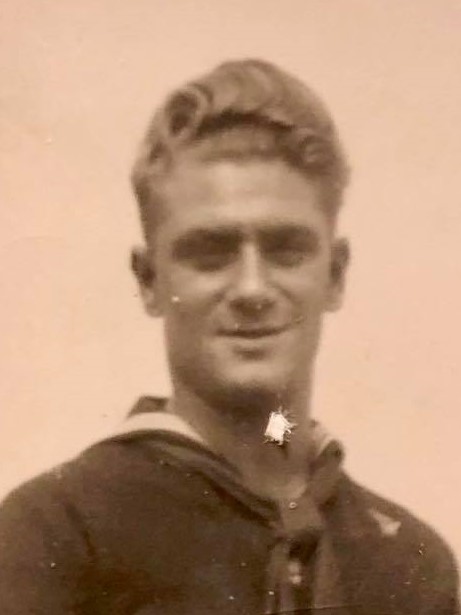 ARM3c
Gerald S FLECKER
ARM3c
Gerald S FLECKER
Born on the 23 June 1923, to Flora and Harry Flecker in Brooklyn, New York. His father was born in Russia. The 1940 census finds them, with Geralds brother Norman living at Cortelyou Road in New York.
They were still living at 134 Cortelyou Rd, New York, at the time of draft registration in June 1942, he was working with the Baumgold Bros company in New York.
He was a resident of Sunrise, Florida in later life. He passed away in 2018 in Sunrise, Florida.
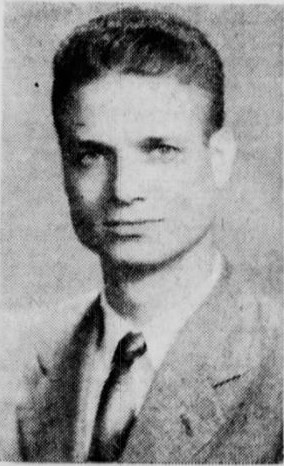 AMM2 Wilbur D LYLE 6092265
AMM2 Wilbur D LYLE 6092265
Born on the 27 Feb 1924 to Elva Mae and James Burdette Lyle in Irwin, West Virginia where he lived until the 1930 census at least. The Warren Times Mirror, his local newspaper, reported frequently on his wartime service.
Military records indicate that he entered the Navy in the summer of 1942 and undertook preliminary training at Jacksonville until January 1944. His first recorded service period he listed as being based at Naval Air Station Deland in Florida from the 28th of March 1943. He had then served a tour of duty between August 1st, 1943 and March 10th, 1944 with VB143 based at Receife and Bahia in Brazil. With this unit he would have flown in the PV-1 Ventura patrol aircraft. The Warren Times Mirror, his local newspaper, reported on Thursday, 23 March 1944, that he had returned from six months based in Brazil to spend a furlough with his parents. He had left on the preceding Sunday for another assignment in Chincoteague, Virgina, the location of a Naval Air Station.
He married his lifelong partner, Sara Jennie Swanson, less than a month before his shipping out for Europe and his near loss on 38799. Their candle lit wedding took place at the Methodist Church in Sheffield, and both had been in the 1942 high school class in the town.
On the AEA / NATS manifest, his address is recorded as RFD# 2, Sheffield, Pa, which matches his draft registration card from 1945. His local newspaper reported again that he was on 30 days survivors leave on the 20th October 1944.
The Warren Times Mirror reported on his subsequent postings in 1945. April would see his posted from Norfolk to Hutchinson, Kansas, where training of PB4Y crew was undertaken. September 1945 saw them reporting his posting to Great Lakes Naval Training Center, having previously been stationed in San Diego. He had been discharged honourably from the Navy at the beginning of November 1945 but was required to register for the draft nonetheless three days later.
He went to university after the war and after graduation in 1952 became a pharmacist. Wilbur passed away on the 12th December 1989 in XXX and lies buried with his wife
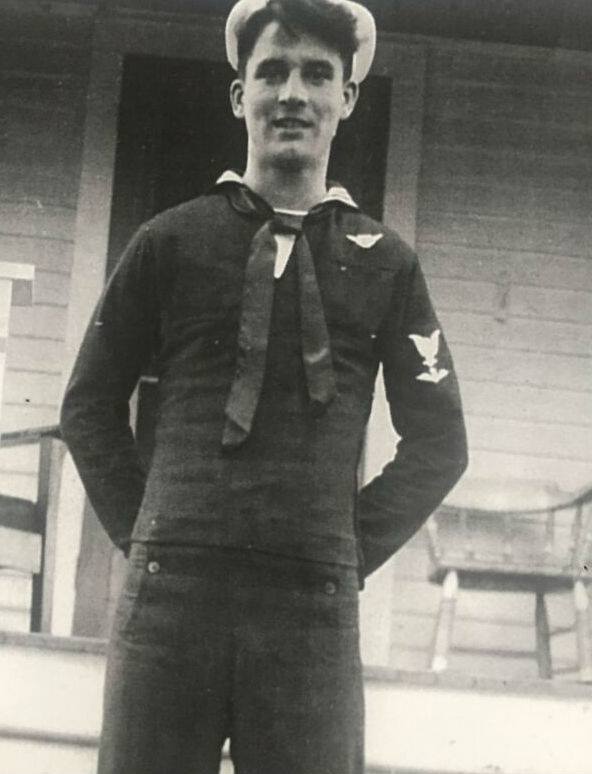 AOM2
Joseph E VIGEANT II 2388921
AOM2
Joseph E VIGEANT II 2388921
Joseph was born in 7 September 1926 to Clarence Hubert and
Marie Vigeant , later son of Mrs Leo J McDermott of
Pleasantdale, New Jersey.
His name can be found sometimes as Edward Joseph Vigeant or J
Edward Vigeant.
Edward joined the New York National Guard in September 1941,
enlisted in the navy in 1942 and his graduation from Aviation
Ordnanceman (AOM) school at Norman, Oklahoma was announced in
his local paper in February 1943. In June 1943, his step
grand mother was honoured by her local Army and Navy Union for
having five sons or grand sons in the forces. Edward was
present on the night along with a step brother, James O'Grady
who was also serving in the navy.
His address per the October 1944 shipping manifest is RFD#2,
New Turnpike Road, Troy, New York. On the 3rd of November
1944, the Troy Record published a full story on his ordeal.
28 August 1945 finds Joseph on the escort carrier USS Takanis
Bay in the Pacific and a year later, arriving in Honolulu on a
US Navy transport aircraft. He was released from the
service in Shoemaker, California in September 1946.
He married his wife Dorothy in 1949 in Troy, and together ran
the Tory Neon Sign Co. They traveled to Clifden a number
of times, the first time in 1985, to meet those who cared for
the crew in 1944. He passed away on 30th April 1992.
Dorothy and many family members attended the memorial unveiling
in 1994.
The Troy Record article in 1944 reads:
 DOWN' AT SEA--Edward Vigeant,
18-year-old Navy flyer, spent more than two days on a life
raft in the stormy Atlantic, without food and water, after
his plane was forced down. When a comrade died, Vigeant and
the' others of the crew kept his body on the raft to give
them some protection against the cold. Vigeant
wearing the short flying jacket he has on in the picture. He
is the son of Mrs. Marie O'Grady McDermott of 46 Hoosick
Street.
DOWN' AT SEA--Edward Vigeant,
18-year-old Navy flyer, spent more than two days on a life
raft in the stormy Atlantic, without food and water, after
his plane was forced down. When a comrade died, Vigeant and
the' others of the crew kept his body on the raft to give
them some protection against the cold. Vigeant
wearing the short flying jacket he has on in the picture. He
is the son of Mrs. Marie O'Grady McDermott of 46 Hoosick
Street.
An 18-year-old Navy flyer, who drifted
in the hurricane-tossed North Atlantic for more than two
days, keeping alive by crouching under the body of a dead
comrade, is about to return to duty after his 30-day
“survivors leave”. The navy gave him the choice of
ground duty or flying. He chose the air.
Edward Vigeant A.M.O. second class in the Navy Air
Forces went overseas early in September. The Navy Liberator
bomber carried a crew of 10 men. As it neared its
destination the big plane lost its way “through enemy
action”. For hours the plane flew in circles until,
gas supplies exhausted, the pilot was forced to land on the
sea. He made a perfect landing, in the dark,
with the waves running 50 feet high.
Four members of the crew went out through the nose of
the plane and were never seen again.
Vigeant was sitting on the rubber life raft when the
plane hit the water. He inflated the raft and helped
two members of the crew aboard. Then he discovered
that the raft was tied to the ship's tail and worked
frantically to free it before it was dragged down into the
sea. He went into the water again to help others of
the crew who were swimming but did not have the strength to
reach the raft.
Finally, there they were, six men on a raft, the
sitting space of which was about two feet by six feet.
The waves were mountainous, the temperature about 40
degrees, and it was raining heavily. They had no food,
no water, no compass. They overturned three times
during the first night and lost all but one small oar.
They were wearing short leather flying jackets, which gave
little protection from the biting cold.
Vigeant never lost hope that they would be rescued.
“It's on account of my age I guess,” he said. “I made
out better than the older ones. I haven't sense enough to
worry.”
During the first day one of the six died of shock and
exposure. He was 19 years old and he died in Vigeant’s
arms. At first the five half frozen boys on the raft
thought they would consign his body to the sea. Then
they discovered that they could use it almost as a
blanket. The body of the dead youth gave them some
warmth. During that first day on the raft they lived
through two disappointments. They sighted a plane, but
the crew did not see them. Later a seagull, which
would have provided food, flew near the raft, but they could
not catch it.
Vigant kept “pretty cheerful.”
“I kept cracking jokes,” he recalled, “but some of the
crew were too sick and cold to laugh at me. We were so
cramped into that raft that he had to take turns rubbing
each other to keep the circulation going. And we had
to keep awake. If we had gone to sleep we would have
died.”
Towards the end of the second day the men on the raft
sighted land. They had all held up until then, but to
know that life was so near and they had no means of getting
the raft shore drove some of them into delirium. One
of the men tried to drown himself by holding his head in the
water. Vigeant pushed him down into the bottom of the
raft and held him there.
The one oar was used as a tiller to steer the
raft. Sometimes the raft drifted so close to shore the
flyers thought their chance had come. Then it was
carried out to sea again. When that happened the men
went wild with anger and grief.
It took 15 long, frantic hours for the raft to finally
drift ashore.
“We fell out of it and lay on the beach” Vigeant said,
“then we crawled inch by inch over the sand to a
farmhouse. It took us an hour to reach the
house.”
They were given food and comfort by a friendly
people. The body of the boy who had died in the raft
was buried there.
Vigeant telephoned his mother, Mrs. Marie O'Grady
McDermott of 46 Hoosick Street, before she was aware that
his ship had come down at sea. He has been spending
his leave with his mother and his grandmother, Mrs Alice
O'Grady of Pleasantdale. His stepfather, Leo
McDermott, water tender first class in the Navy is on
overseas service.
On the 11 September 1994, a memorial was unveiled in Aillebrack
to the crew of PB4Y 38799. The stone cairn contains a
metal plate with the following text:
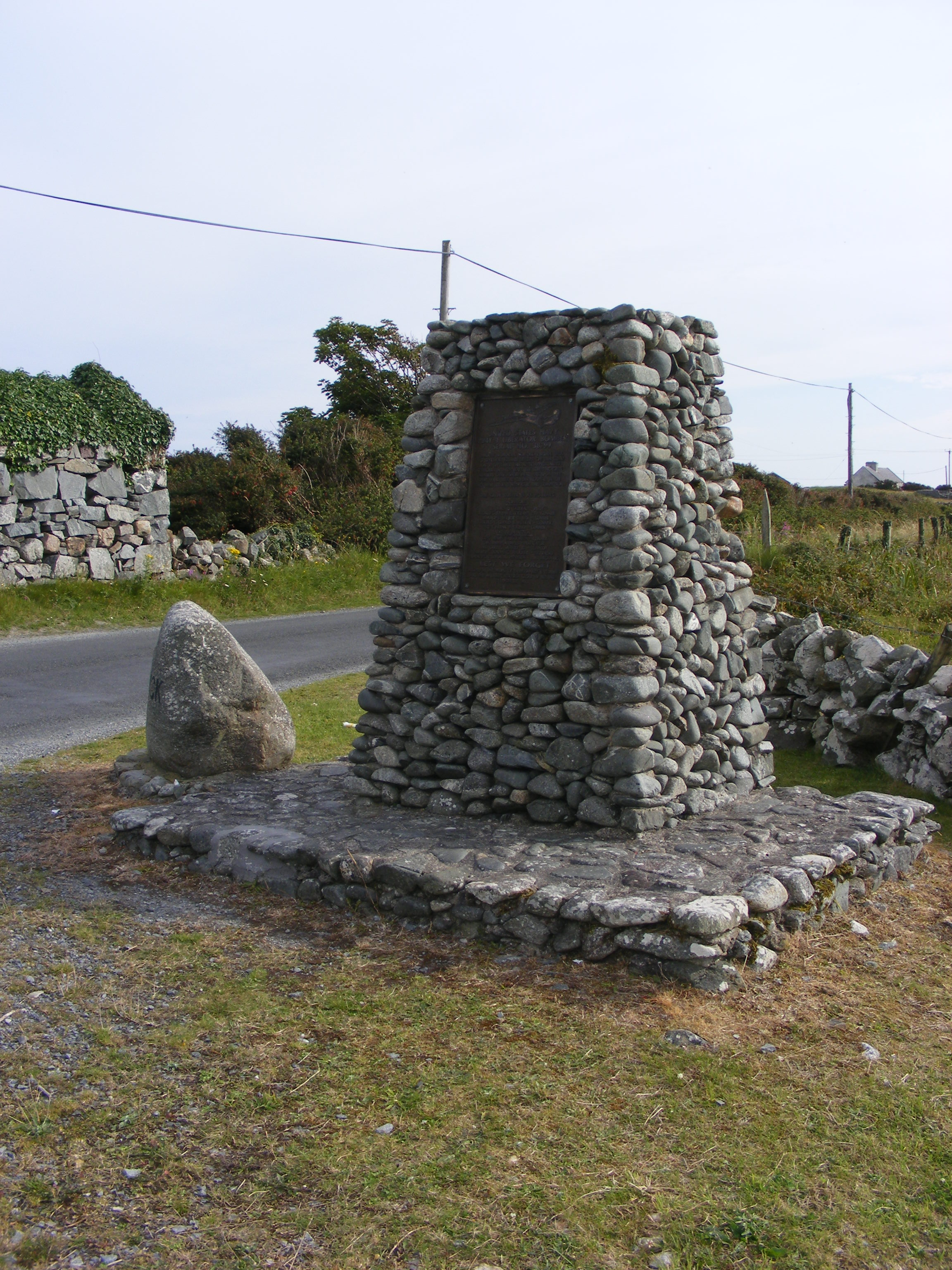
UNITED STATES NAVY
PB4Y-1 LIBERATOR BOMBER
SERIAL NO. 38799
ENROUTE FROM N.A.S. NORFOLK, VIRGINIA, U.S.A.
TO REYKJAVIK, ICELAND, DITCHED OFF THIS COAST ON
14 SEPTEMBER 1944. AFTER APPROXIMATELY
33 HOURS IN A LIFE RAFT, THE SURVIVING CREW
MEMBERS CAME ASHORE NEAR THIS SPOT. THEY
SPENT FOUR DAYS AT CLIFDEN HOSPITAL, WHERE
THEY WERE TREATED WITH CARE AND COMPASSION
THE CREW ROSTER IS AS FOLLOWS
SURVIVORS
LT. JAMES O. TRUDEAU - PILOT
A.G.M.3/C JOSEPH E. VIGEANT 11 - GUNNER
A.M.M.2/C WILBUR D. LYLE - GUNNER
A.R.M.3/C GERALD S. FLECKER - GUNNER
S.1/C FRANK P. CICERO - GUNNER
KILLED IN ACTION
S.1/C HENRY E. BECKWITH - GUNNER
ENS. PHILIP A. MILLS O-326268 - NAVIGATOR
ENS. CARL G. SNAVELY JR. - CO-PILOT
A.R.M.2/C JOSEPH G. FLEUCHER - 1st. RADIO
A.M.M.3/C VERNON H. PETERSEN - 2nd MECHANIC
LEST WE FORGET
ERECTED BY THE PEOPLE OF BALLYCONNEELY AND CLIFDEN
AND THE WARPLANE RESEARCH GROUP OF IRELAND
11 SEPTEMBER 1994
PLAQUE DESIGN BY J.E. VIGEANT III/1994
FABRICATED BY TROY NEON SIGN CO/1994
In 2009, Thomas L Walsh, an American author name Thomas L Walsh
published a book, Damnyankee containing the story of the men's
journey across the atlanic and their short stay in Ireland.
The four missing men are remembered on the Tablets of the Missing and Buried at Sea at Cambridge American Cemetery in England.
